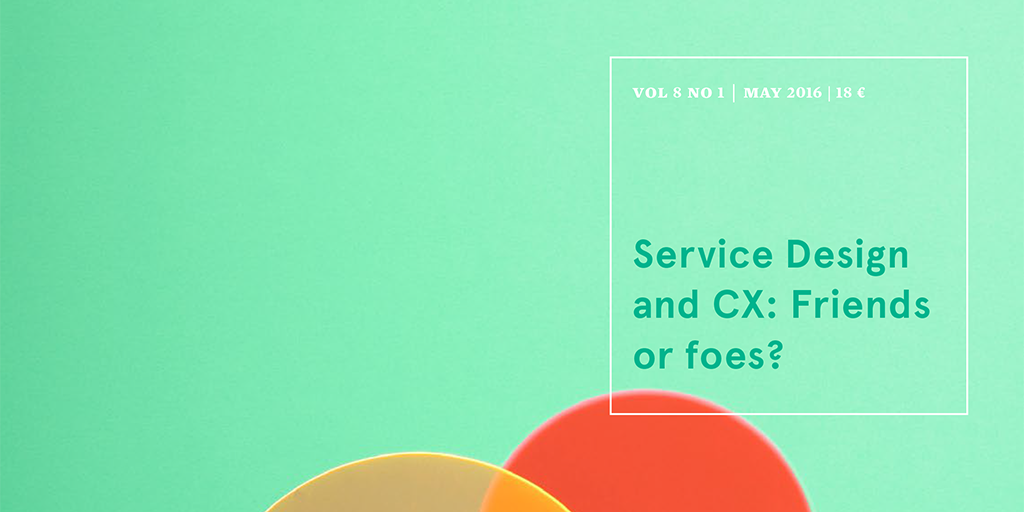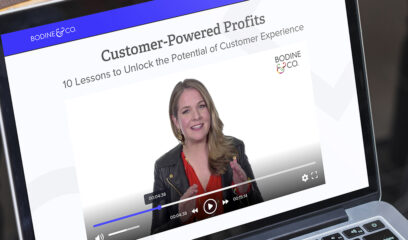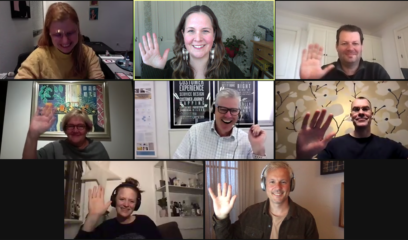For the better part of a decade, I’ve had courtside seats to the evolution of two interrelated disciplines: customer experience and service design. From my vantage point as a both a designer and industry analyst, I’ve seen the potential for these fields to complement, learn, and benefit from each other.
A Natural Partnership
The two fields’ respective objectives are, in my mind, the cornerstone of this seemingly natural partnership. Customer experience professionals must design improved interactions for their customers and, as part of this work, change the processes, policies, and culture of the organizations that drive those interactions. Similarly, one of the top aims of service design is to create effective, easy, and enjoyable experiences for customers, citizens, students, or whomever a particular service is designed for. So far, so good.
Or Maybe Not…
Unfortunately, the union of these two fields has been bumpy and less than expeditious. Customer experience professionals are partly to blame. The word “design” strikes fear in the hearts of many business people indoctrinated in traditional business practices—and who think they need to be artists in order to be designers. But I’ve also watched service designers focus on the differences between these fields, rather than looking for common ground. They’ve been particularly keen to point out the differences between themselves and one other related discipline: Marketing. This is problematic for the field of customer experience, as it gained much of its start from marketers who realized it was more efficient to retain existing customers than to attract new ones.
Let me point out here that I’m not a fan of traditional marketing, and I hold its close cousin advertising in even lower esteem. I worked at a traditional advertising agency for a year and day—yes, I counted—and saw first hand its antiquated attitudes and approaches. It was painful for me both personally and professionally to work in an organization with values antithetical to the tenets of service design. But while traditional marketing and advertising aren’t dying off as quickly as I’d like, they shouldn’t be the platform on which service designers justify their “otherness” from the fields of marketing and customer experience. Why not?
Marketing Is Not The Enemy
First, many of today’s marketers no longer hail from or hold onto the field’s traditional past. Sure, they care about Net Promoter Score and other marketing-based metrics, but they’re no longer pushing out empty promises. They’ve drunk the customer experience Kool-Aid. They actually care about their customers. And they’re seeking new ways to interact with them.
Second, the field of customer experience has evolved into a discipline that stretches far beyond the marketing department.
One of my largest clients, a tech giant based in the Silicon Valley, has positioned its customer experience group in its quality organization. So now the same group that aims to minimize hardware defects and software bugs is looking beyond its core products and services to improve the quality of all customer interactions.
The leaders at another client of mine want to put the customer at center of all internal and external process improvement initiatives—and so they initially rooted the company’s customer experience efforts in a process improvement group, part of operations. Now, after a recent foray into journey mapping, customer experience is quickly spreading to IT and human resources.
In fact, it’s hard for me to say at this point what a typical customer experience professional looks like from a pedigree perspective. Certainly, there still remains a strong contingent with marketing backgrounds. But as customer experience has gained strategic importance across industries—and more bodies have been needed to manage these initiatives—more and more employees have been pulled into customer experience land from far flung corners of their organizations. They share innate customer centricity and an ability to activate those around them. But some of them have “customer experience” in their titles despite not fully understanding what that really means or what exactly they need to do in their new roles. (Hence the growing number of customer experience conferences and consultancies!)
Let’s not forget the same thing was once true about the field of service design. Several decades ago, there were no “service designers.” There were no academic classes, let alone degrees, in service design. The field of service design pulled like-minded practitioners from industrial design, interaction design, and even graphic design. It paired those designers with systems thinkers with a deep understanding of—and passion for improving—how organizations work. They didn’t have established titles or job descriptions. But they worked together to create services that people needed, that people loved. They created services that were meaningful for the organizations that delivered them and for their communities.
That’s exactly what customer experience professionals are trying to do.
But Wait, There’s More!
There’s one other way in which customer experience and service design are similar. Despite having an estimated market size of nearly USD $11 Billon by 2020, the discipline of customer experience still struggles to have a serious and permanent seat at the executive table. Customer experience initiatives are often the first to get cut when budgets get tight. And that makes customer experience positions—and entire corporate CX initiatives—vulnerable. Sound familiar?
It’s time for us to put our differences aside. End the debates. Stop creating Venn diagrams. Customer experience professionals and service designers can only gain from partnerships that champion and achieve our shared objectives.
***
This post originally appeared in my regular column in Touchpoint Journal, published by the Service Design Network.




